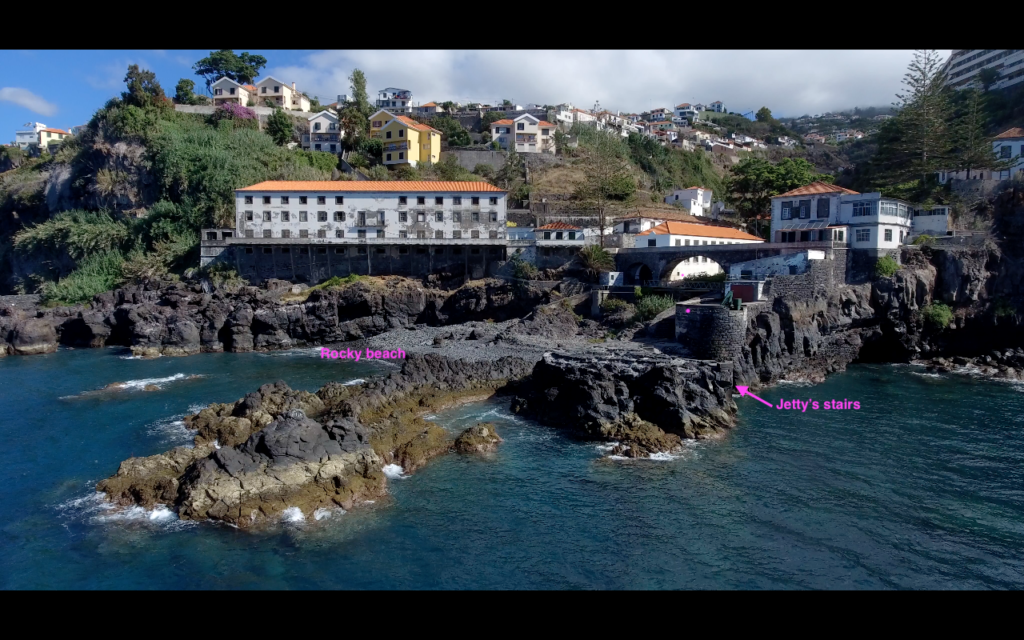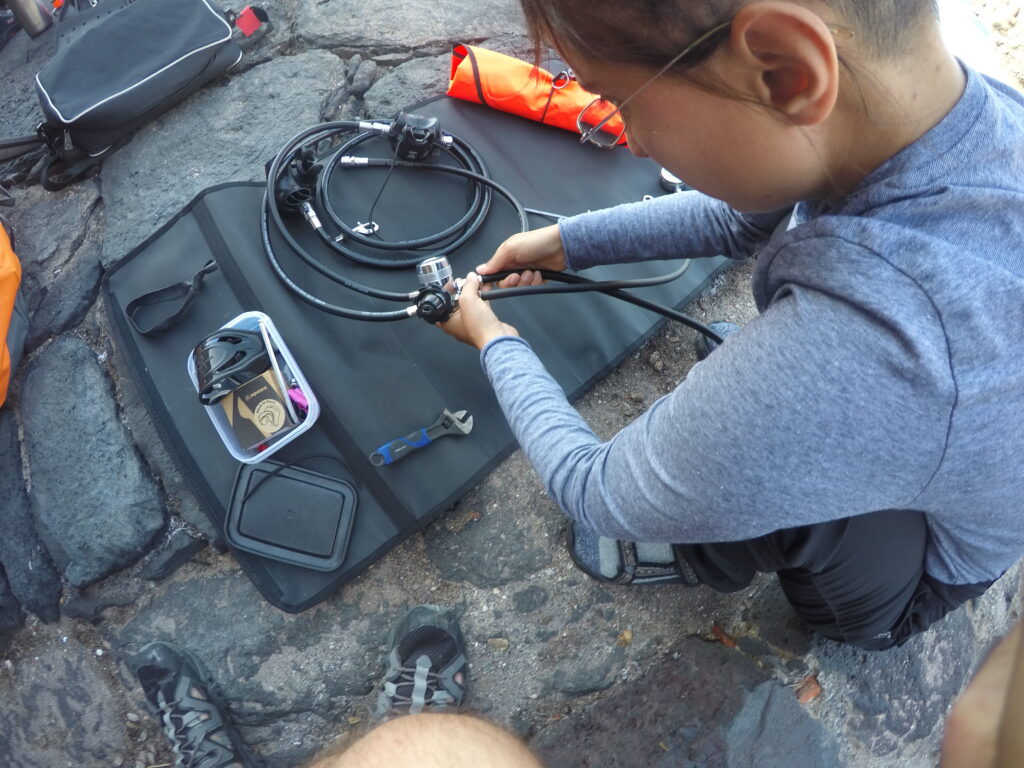Our current project in Madeira (see https://islandfutures.net/databuoy/) involves quite a lot of diving plans and subsurface activity in the test site at Ponta do Lazareto, Madeira. Some tasks are simply manual labor underwater, but we consider it all ‘scientific diving’ as the diving is a tool for our research. There are two main entries and exits to the site, one is part of a historic jetty with stairs that facilitate the access to the water, and the other is a rocky beach (see Fig. 1). Initially our dives at Ponta do Lazareto had the goals of familiarisation of the site, depth mapping, and installing buoy moorings. Next steps include video and photo transects to record flora and fauna, and photogrammetry of seabed morphology.

We typically dive once or twice in a day using Nitrox 32 in a maximum depth of 15 meters. We differentiate research project dives from our other recreational dives, and we created a specific logbook (see below) that contains the additional information concerning the dives.
Dive planning is important, so before entering in the water we establish the details for the upcoming dive. Safety is the keyword! We have trained to GUE standards and usually follow the pre-dive checklist proposed by GUE, most importantly we discuss the goal(s) of the dive and each team member’s responsibilities and their tasks. Creating a list of all the extra equipments (e.g., ropes, measure tape, buoys, lift bags, cameras) required for the dive help (Max) not to forget those items. The other important aspect we never miss is equipment match, before immersion we double check each diver’s equipment again. If there are complex manoeuvres or specialised tasks to perform, we will simulate the activity above water and adjust the choreography for efficiency.
Concerning the dive execution, we stick to the plan as closely as possible, each performing the assigned tasks to achieve the team goal. So far so good, yet the underwater world can “surprise” in many different ways, for instance poor visibility complicates the fulfilment of some activities. Realising how much longer it takes to complete each task underwater can cause stress and dives with unfulfilled goals. So learning as much as possible our dive site and regularly testing our capabilities is important to predict many challenging situations.

Again, planning is important, as well as having appropriate equipment. It might happen that a piece of gear selected for the dive is not adequate, for example we realised that the extra hose to fill a lift bag was too short, might create a potential hazard, and needed to be replaced. Or as we realised on our last excursion, we really need an underwater equipment bag to keep everything together, as things tend float to the surface unattended. Because we work on very slim budget, we make a lot of equipment ourselves; this can be useful as we can fully customise each piece, but in the end it might not be cheaper than buying commercial gear, if we counted all of our labour hours!
We recently completed the course Scientific Diver at CCMAR in Faro, Portugal. Looking forward to continue this activity!